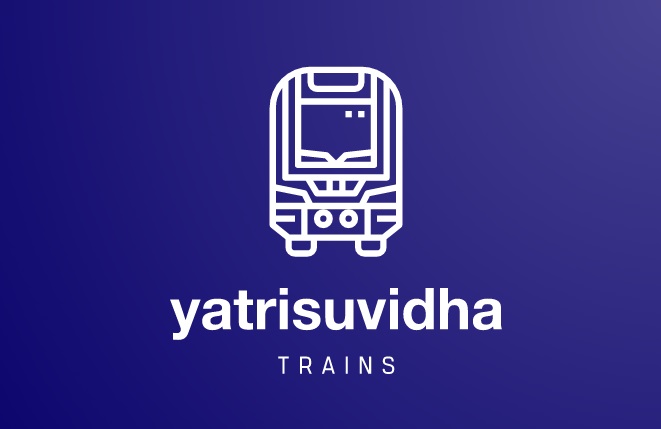
GNWL and WL in IRCTC
When booking train tickets in India through the IRCTC (Indian Railway Catering and Tourism Corporation) platform, you often come across terms like GNWL and WL. These abbreviations are crucial for understanding your ticket status and your chances of securing a confirmed seat or berth.
What Does GNWL Mean?
GNWL (General Waiting List) is the most common waiting list quota in the Indian Railways system. It is allocated to passengers who begin their journey from the train’s originating station or a nearby station with high passenger traffic. GNWL is prioritized over other types of waiting lists, making it the most likely to get confirmed when seats become available.
Key Features of GNWL:
Applicable Stations: GNWL applies to passengers starting from or near the originating station of the train.
Priority: Tickets under GNWL have a higher chance of confirmation compared to other waiting lists.
Confirmation Probability: If your ticket status is GNWL, your chances of getting a confirmed ticket are relatively better, especially during non-peak travel seasons.
Dynamic Nature: As cancellations occur, GNWL positions improve and might turn into RAC (Reservation Against Cancellation) or CNF (Confirmed).
What Does WL Mean?
WL (Waiting List) is a general term indicating that a ticket is not confirmed at the time of booking. The WL status means the passenger has been placed in a queue for confirmation, depending on cancellations by other passengers.
WL Status Categories:
The WL status is further categorized into sub-types based on specific quotas or booking scenarios:
GNWL (General Waiting List):
Highest priority among waiting lists.
Applies to passengers boarding near the train’s starting point.
RLWL (Remote Location Waiting List):
Assigned to passengers boarding at significant stations along the train route.
Lower priority compared to GNWL.
PQWL (Pooled Quota Waiting List):
Applies to tickets booked under pooled quota between small stations.
Lesser confirmation chances than GNWL.
TQWL (Tatkal Quota Waiting List):
For tickets booked under the Tatkal scheme.
Lower priority for confirmation.
CKWL (Current Booking Waiting List):
For last-minute bookings made close to the departure time.
RLGN (Remote Location General):
Similar to RLWL but slightly different in allocation.
How GNWL and WL Work Together
When you book a train ticket, you might notice the ticket status displayed as something like GNWL/12 or WL/15. Here’s what these terms mean:
GNWL/12:
Indicates that the ticket is in the General Waiting List, and the position is currently 12. If cancellations occur, this number will reduce, increasing the chances of confirmation.
WL/15:
Indicates a general waiting list position of 15. This may or may not fall under GNWL, depending on the route and quota allocation.
If your ticket is confirmed later, the status will change to RAC (Reservation Against Cancellation) or CNF (Confirmed). RAC guarantees a seat but not a full berth, while CNF ensures a confirmed seat or berth.
Factors Affecting GNWL Confirmation Chances
Cancellation Trends:
High cancellation rates increase the chances of GNWL tickets getting confirmed.
Peak Seasons:
During festive periods or holidays, GNWL tickets are harder to confirm due to higher demand.
Quota Allocation:
Trains with more general quota seats offer better GNWL confirmation chances.
Route Popularity:
On heavily trafficked routes, GNWL tickets may take longer to confirm.
Time of Booking:
Early booking improves your chances of getting a lower GNWL number, which is easier to confirm.
Checking GNWL and WL Status on IRCTC
You can check your ticket status on the IRCTC website or mobile app by following these steps:
Login to IRCTC: Enter your user credentials on the IRCTC platform.
Go to Booked Tickets: Navigate to the “Booked Tickets” section to view your ticket details.
View PNR Status: Enter your PNR (Passenger Name Record) number to check the current status of your ticket.
Track Updates: Keep an eye on changes in status, especially closer to the travel date.
Tips to Increase Your Chances of GNWL Ticket Confirmation
Book Early: The earlier you book, the lower your waiting list number will be, improving your chances of confirmation.
Avoid Peak Travel Times: Travel during weekdays or off-peak seasons to secure a higher confirmation probability.
Monitor PNR Status: Regularly check your ticket status and consider alternative plans if confirmation seems unlikely.
Use Tatkal Scheme: If GNWL tickets seem uncertain, book under the Tatkal quota closer to the travel date.
What Happens If GNWL Does Not Confirm?
If your GNWL ticket does not get confirmed:
E-Tickets: Automatically canceled, and a refund is issued to your account.
Counter Tickets: Require cancellation at the reservation counter for a refund.
Travel Restrictions: Passengers with unconfirmed e-tickets are not allowed to board the train.
Understanding GNWL and WL in IRCTC is crucial for planning your train journey effectively. GNWL, as part of the General Waiting List, offers a higher chance of confirmation compared to other types of waiting lists. By booking early, choosing non-peak travel times, and regularly monitoring your PNR status, you can maximize the likelihood of securing a confirmed seat.
Planning ahead and staying informed about the nuances of the Indian Railways’ reservation system can make your travel experience smoother and stress-free.

Leave a Reply